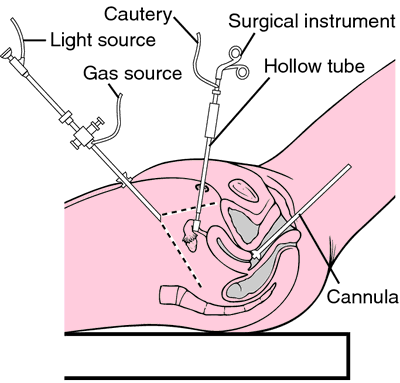Interest in understanding female sexuality has grown rapidly over the past decade, but researchers still strive to accurately define, assess and treat sexual issues and dysfunction in women of all ages.
In order to treat female sexual dysfunction, clinicians must first define what constitutes sexual “problems” for women and devise ways to accurately measure and diagnose symptoms. Women and their physicians must be able to identify the point at which a problem becomes severe enough to qualify as a clinical disorder deserving of more detailed evaluation and possible treatment.
This is not easy because sexual behaviors and needs are not the same for all women, and female sexual function is a complicated mix of physical, psychological, hormonal, and emotional factors. Various health conditions, surgeries or medications can also greatly influence a woman’s sexual response and activity.
Clinicians have agreed upon a few working definitions, although modifications are likely to be made as our understanding of female sexuality continues to develop. Currently, female sexual dysfunction (FSD) includes four categories of disorders:
• hypoactive sexual desire disorder (HSDD) or low libido
• female sexual arousal disorder (FSAD)
• female orgasmic disorder (FOD)
• sexual pain disorder including dyspareunia (genital pain during intercourse) and vaginismus (involuntary contraction of the vaginal wall during intercourse)
Female sexual dysfunction involves any one of these disorders, and for some women includes two or more. To make a full diagnosis, physicians will also ask if patients’ symptoms are recent or lifelong, apply to only specific situations/partner(s) or apply generally, and if a specific cause or event contributed to their dysfunction.
Physicians and therapists currently make a distinction between sexual complaints, dysfunction and disorders. As complaints become prolonged they are classified as dysfunctions, and a dysfunction becomes a disorder once a woman feels that the problem is causing “distress” or having a strong impact on her life. Thus, discontent or dysfunction in one’s sexual life can exist without a medical disorder being present. But when a woman associates the dysfunction with distress, clinicians then classify it as a sexual disorder and will treat it accordingly.
Obtaining an accurate count of how many women experience sexual dysfunction disorders has been difficult because clinical studies are limited and researchers have not used the same definitions for sexual dysfunction disorders throughout all studies. In addition, physicians generally haven’t asked their patients about or reported issues related to sexual health, and patients are often too embarrassed to broach the topic with doctors. So current numbers of cases could be underestimates.
It is clear that female sexual concerns are common, however. Several large surveys of pre- and post-menopausal women estimate that up to 39 to 43 percent report some type of problem with sexual activity. The most common complaint is decreased sexual desire followed by diminished, delayed or lack of orgasm. It is estimated that only about ten percent of women have complaints or symptoms persistent and distressful enough to be diagnosed as a sexual dysfunction disorder.
As women become more educated about their sexual health and physicians improve in discussing and obtaining accurate sexual histories, these numbers will likely change.
In the meantime, it is important for women to know that suffering in silence is not necessary. While sexual activity naturally varies among women, problems do arise at some point for many women. If there are any concerns in this area of their lives, women should be encouraged to speak up and ask questions of a qualified health care specialist they can trust.
Contributed by: D. Jenkins, Ph.D.
Sources:
Frank J. et al., “Diagnosis and Treatment of Female Sexual Dysfunction.” American Family Physician 2008. Mar 1;77(5):635-642. http://www.aafp.org/afp/2008/0301/p635.html
Elder JA and Y Braver, “Female Sexual Dysfunction.” Cleveland Clinic Center for Continuing Education. 2004. http://www.clevelandclinicmeded.com/medicalpubs/diseasemanagement/womens-health/female-sexual-dysfunction/
EmpowHER links about Female Sexual Dysfunction Disorder:
Female Sexual Dysfunction Advocacy Sheet, June 2, 2010.
https://www.empowher.com/female-sexual-challenges/content/female-sexual-dysfunction-advocacy-sheet?page=0,0
Why Should Women Discuss Sexual Problems with Their Doctors? Dr. Goldstein (VIDEO), February 24, 2010.
https://www.empowher.com/female-sexual-challenges/content/why-should-women-discuss-sexual-problems-their-doctors-dr-goldstein-video
How is a Female’s Sexual Desire Problem Diagnosed? Dr. Giraldi (VIDEO), Sept 11, 2009. https://www.empowher.com/female-sexual-challenges/content/how-females-sexual-desire-problem-diagnosed-dr-giraldi-video
How Do You Define Normal Sexual Desire for Women? Dr. Giraldi (VIDEO), Sept 11, 2009. https://www.empowher.com/female-sexual-challenges/content/how-do-you-define-normal-sexual-desire-women-dr-giraldi-video



Add a Comment1 Comments
Sexual dysfunction in women is a topic that is seldom addressed so if you are one of these women who is suffering this type of dilemma, it would be best to seek help from your sexual health care provider.
August 16, 2010 - 6:19pmThis Comment